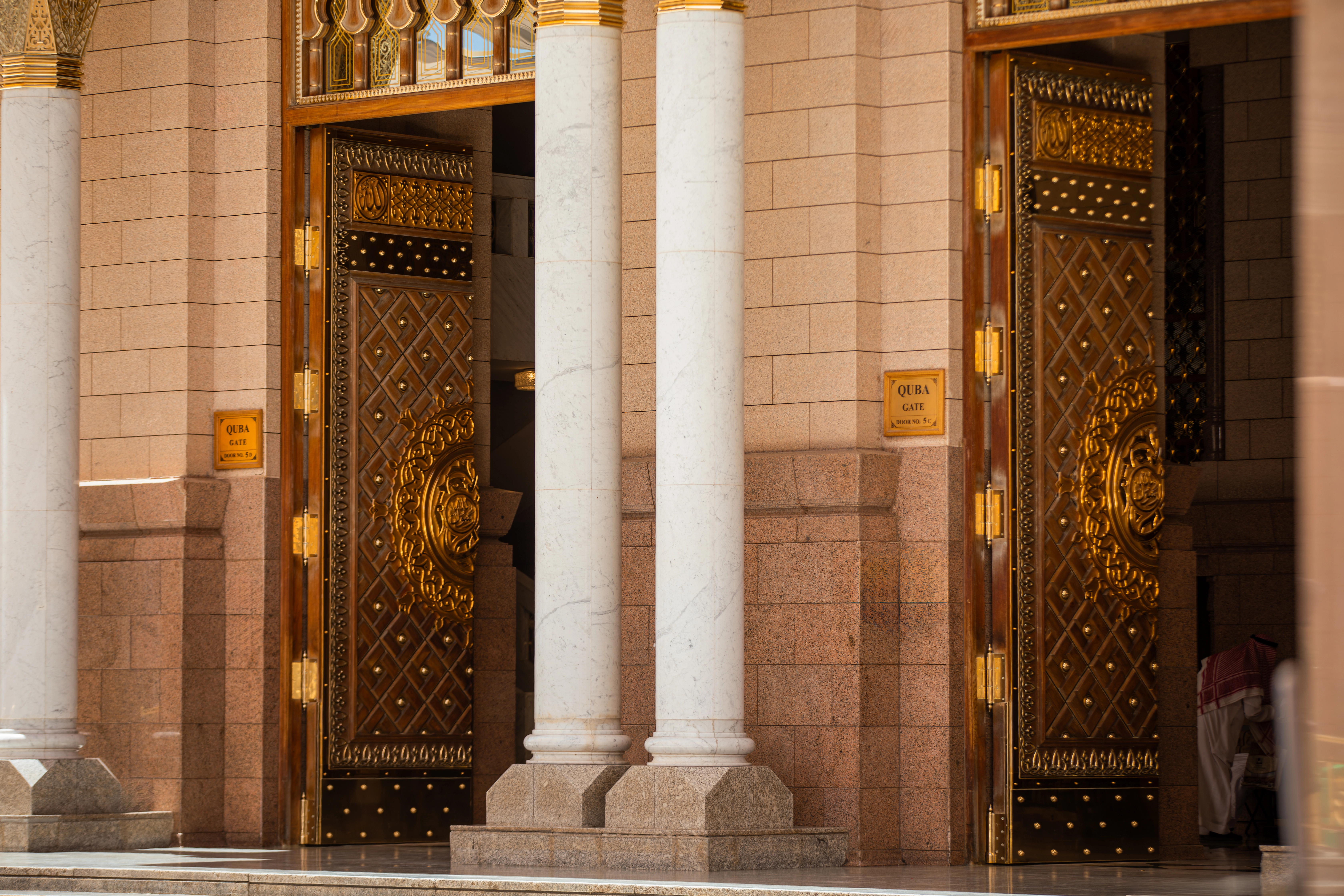
History of the Gates of the Prophet's Mosque
The Prophet’s Mosque narrates a story of continuous development through time, beginning with a simple structure featuring only three gates. With each historical expansion, the gates have added new meanings, embodying the essence of worship and the legacy of time.
Gates of the Original Structure
The Southern Gate (Old Qibla Direction)
This gate opened toward Al-Aqsa Mosque but was closed when the Qibla was changed to the Noble Kaaba.
Atikah Gate (Gate of Mercy)
Located on the western side, it was named after a Meccan woman whose house faced the gate. It was also called the "Market Gate" as it led to the market. Later, it became known as the "Gate of Mercy" after the Prophet (peace and blessings be upon him) supplicated for rain, and the heavens responded with abundant mercy.
Uthman Gate (Gate of Jibril)
Situated on the eastern side, it was named the "Gate of Jibril" because it was where the Prophet (peace and blessings be upon him) met the Angel Jibril during the Battle of Banu Qurayzah.
Era of Expansion
During the reign of Caliph Umar ibn al-Khattab (may Allah be pleased with him), three new gates were added, bringing the total to six:
-
North: A new gate was added, making it two gates.
-
East: Jibril Gate, with the addition of the Women’s Gate.
-
West: Al-Rahmah Gate, with the addition of Al-Salam Gate.
Present-Day Gates
With successive expansions, the number of gates in the Prophet’s Mosque has grown to 86. These gates bear names rich in history, such as As-Salam Gate, Jibril Gate, and Ar-Rahmah Gate, while others are named after the Prophet’s successors and noble companions, including the gates of Uthman ibn Affan, Ali ibn Abi Talib, and Umar ibn al-Khattab.
Gates for Women's Entry
-
Gate No. 29
-
Gate No. 41
-
Gate No. 25
Significance of the Gates
Each gate of the Prophet’s Mosque carries a memory, a story, or a historical imprint. They are not merely entrances but spiritual landmarks reflecting the stages of the Islamic mission and the history of Medina.
The Prophet’s Mosque and its gates remain a testament to the grandeur of this blessed place, reminding visitors of the spirit of faith and their connection to the noble Prophet (peace and blessings be upon him).